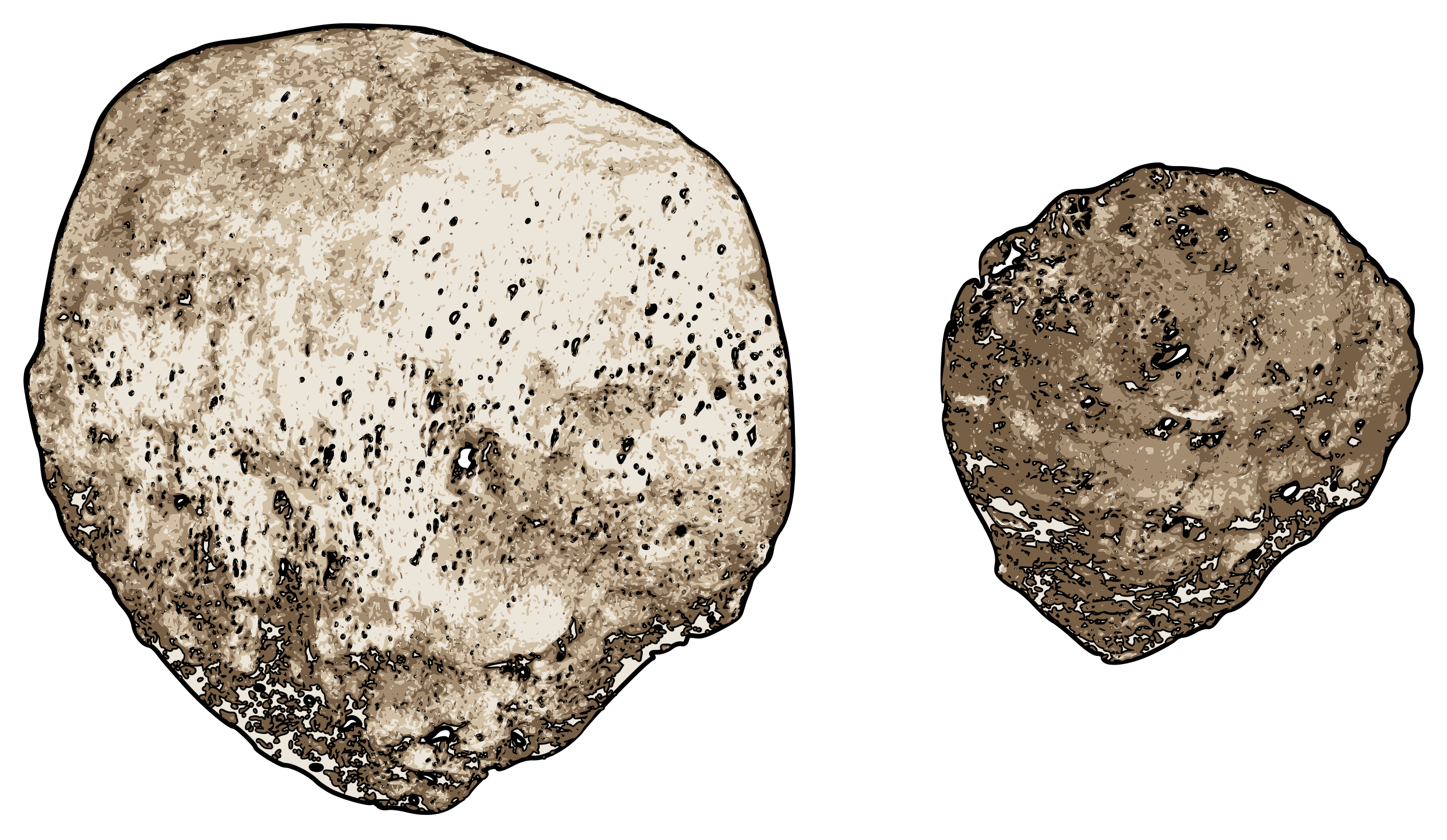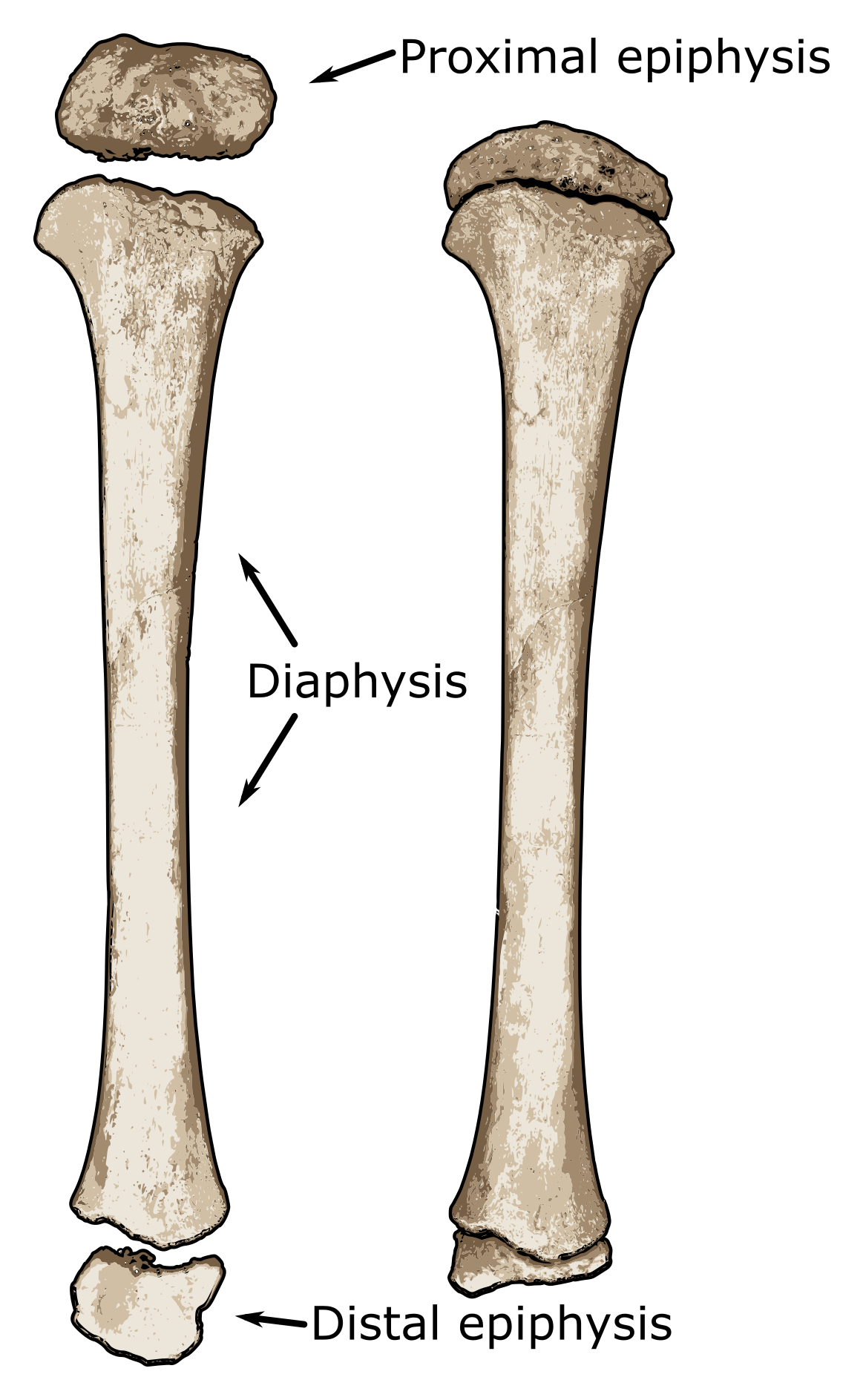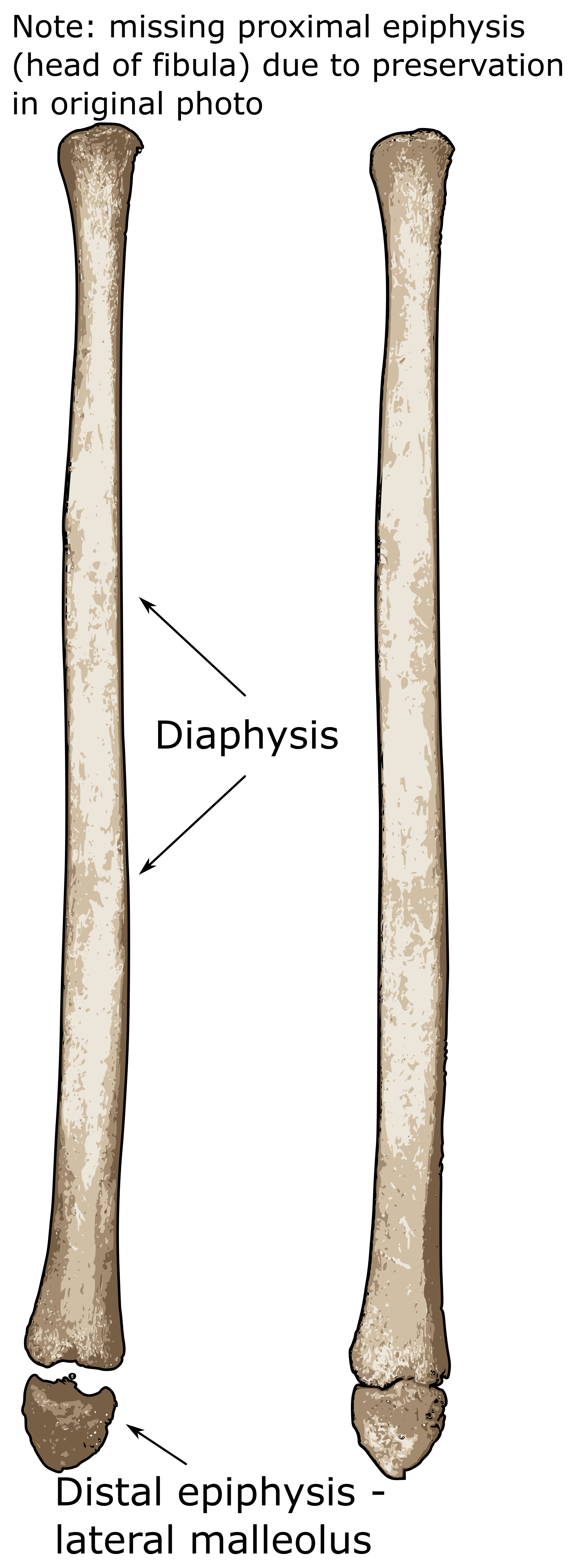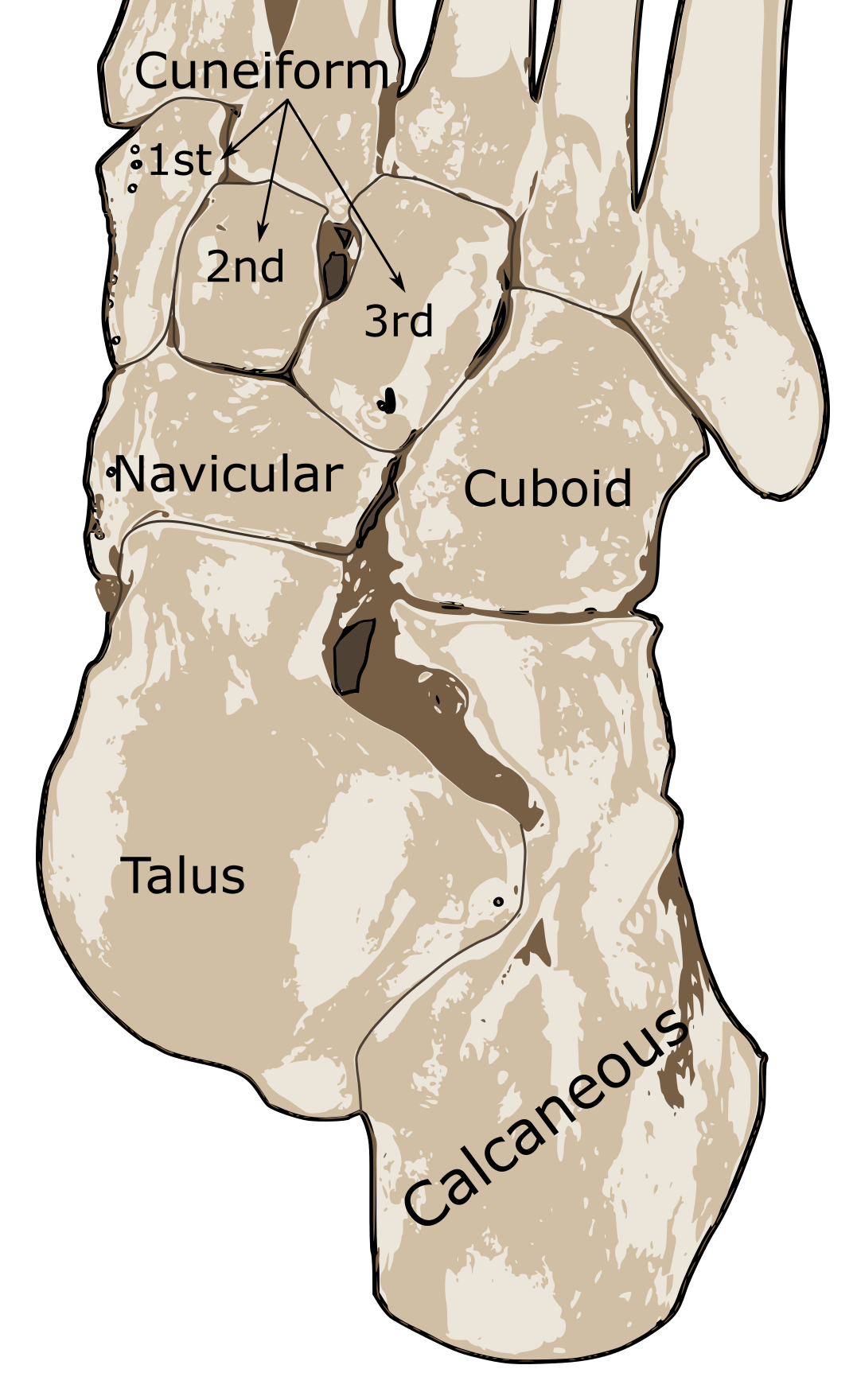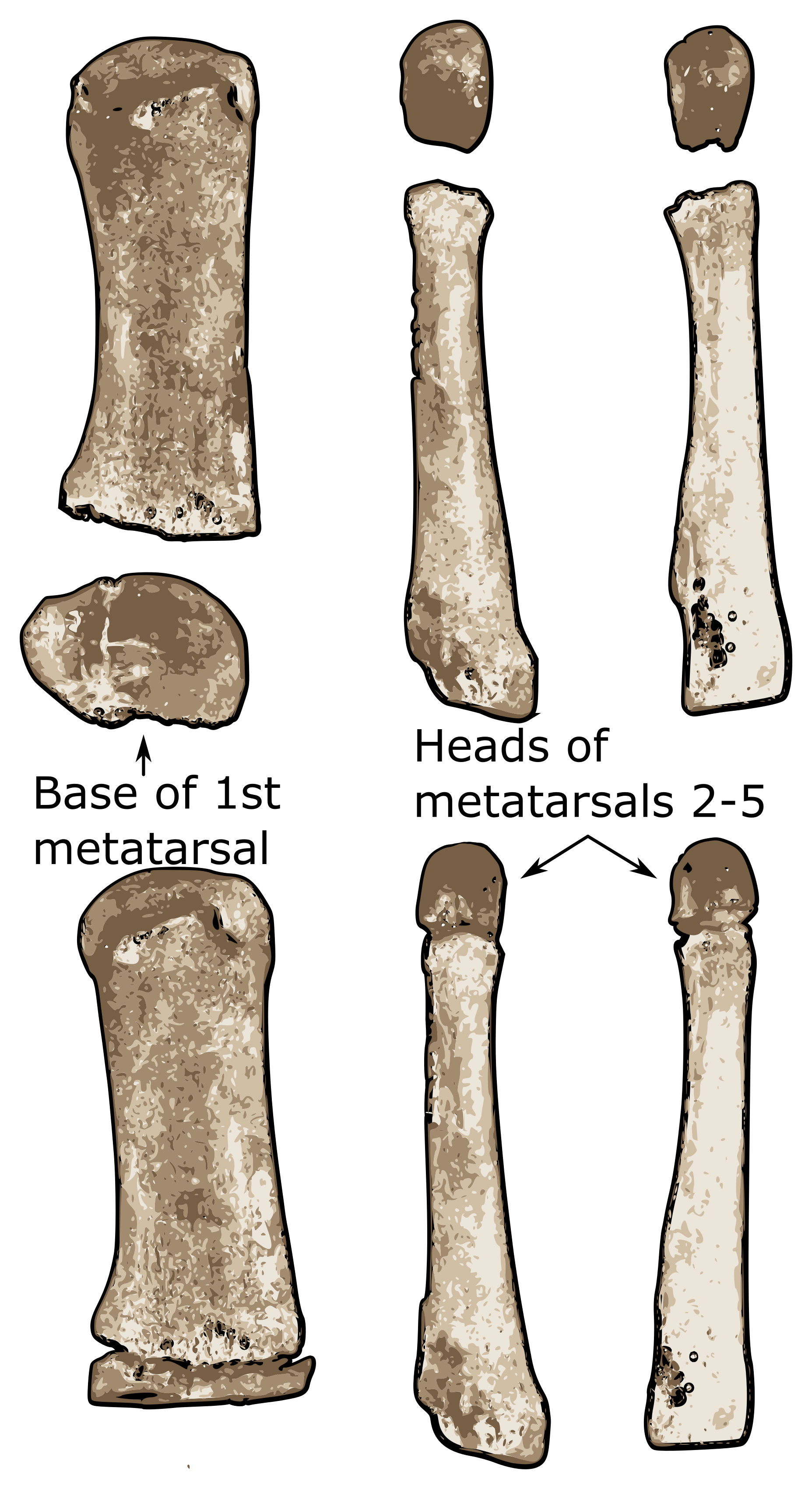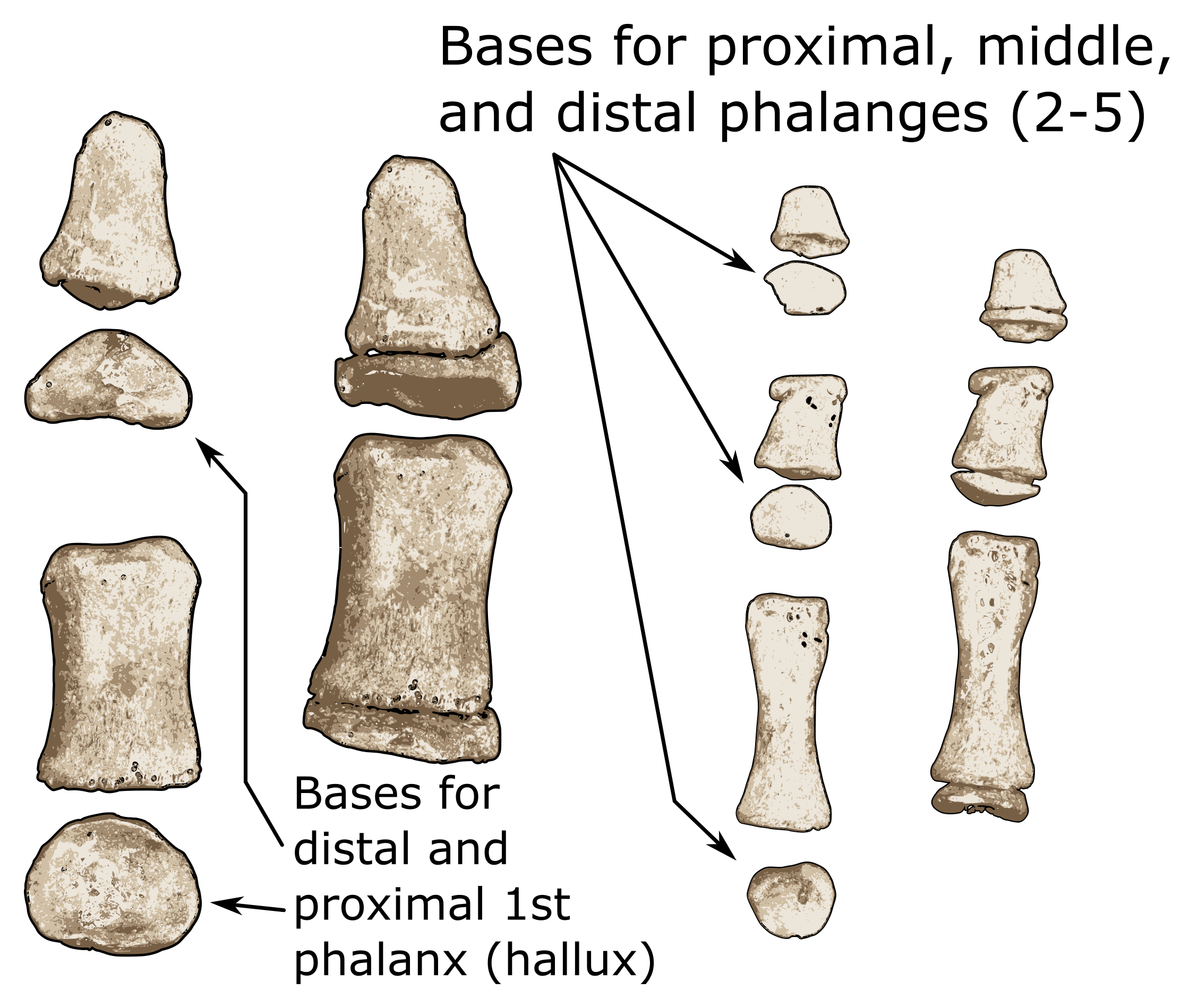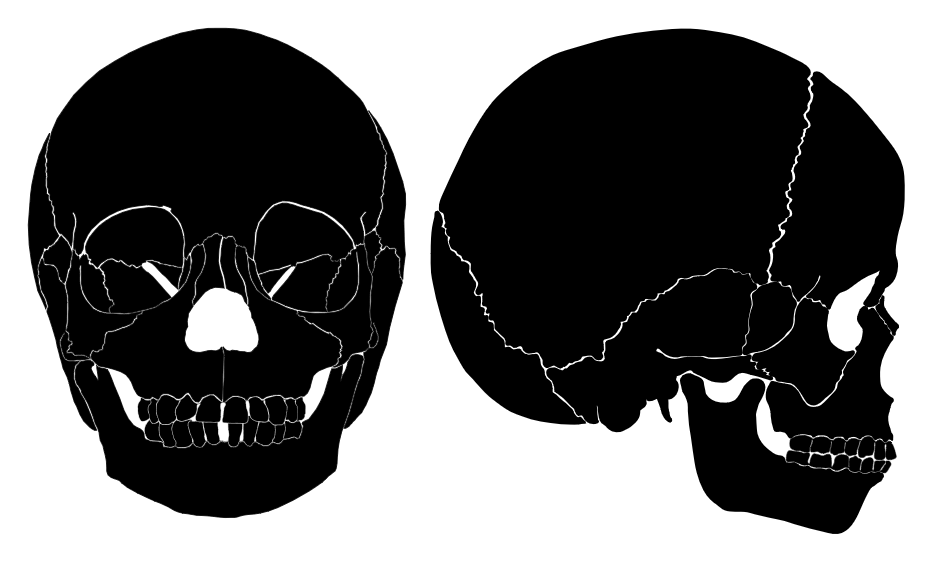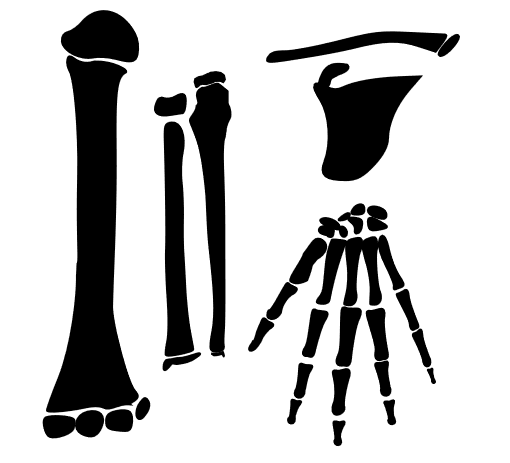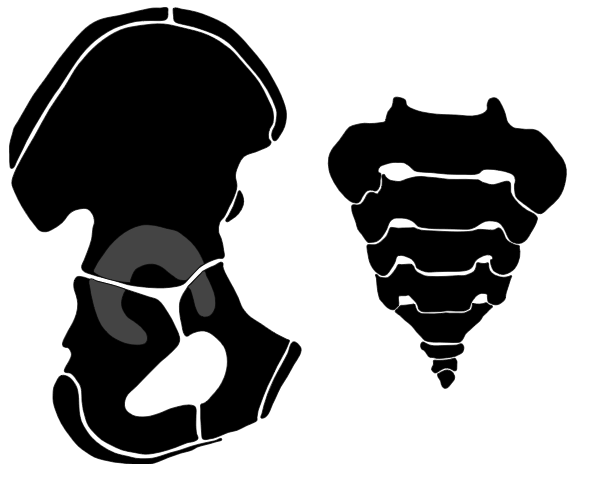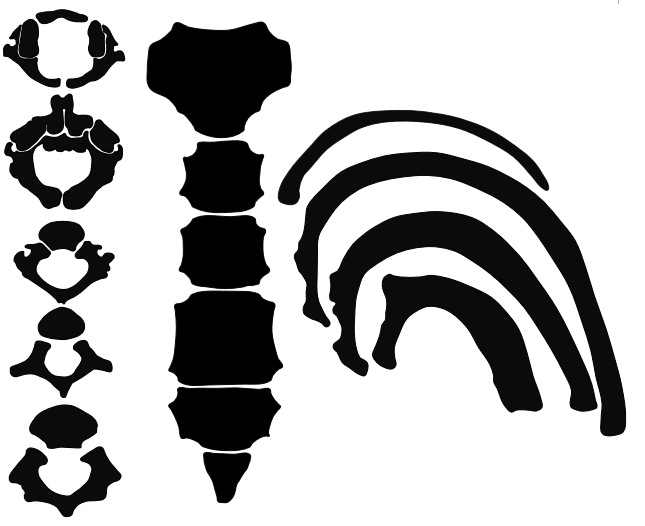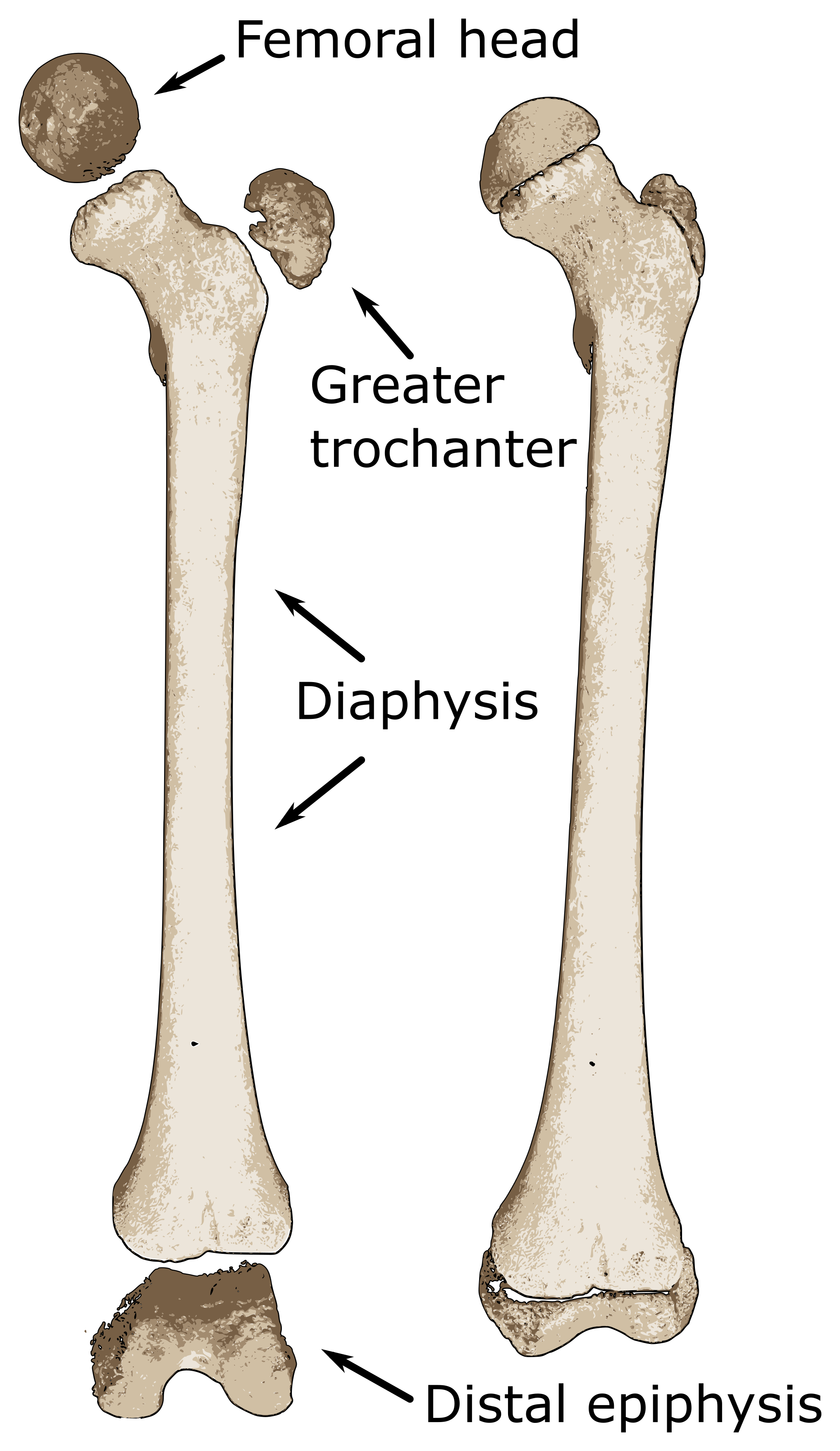
Juvenile femur with unfused epiphyses.
Femur
Unlike many other bones, the femur is represented by both the diaphysis and the distal epiphysis at birth (Gardner and Gray 1970). Within the first year of life, the ossification center for the femoral head appears while between 2 and 5 years, the ossification center for the greater trochanter commences (Milgram and Lyne 1975). It is not until 7 to 12 years of age when the ossification center for the lesser trochanter appears.
Fusion times of the femur are variable and somewhat sex-specific. The femoral head fuses between 12 and 16 years old in females and between 14 and 19 years in males. The same pattern goes for the greater trochanter: 14-16 females; 16-18 males (Milgram and Lyne 1975; Scheuer and Black 2004). The lesser trochanter appears to fuse evenly between males and females from 16 to 17 years old.
The last epiphyses to fuse are the distal epiphyses. Again, there appear to be sex-related differences: 14-18 in females; 16-20 in males .
Femoral head
Estimated Age Range:
Greater trochanter
Estimated Age Range:
Lesser trochanter
Estimated Age Range:
Distal epiphysis - condyles
